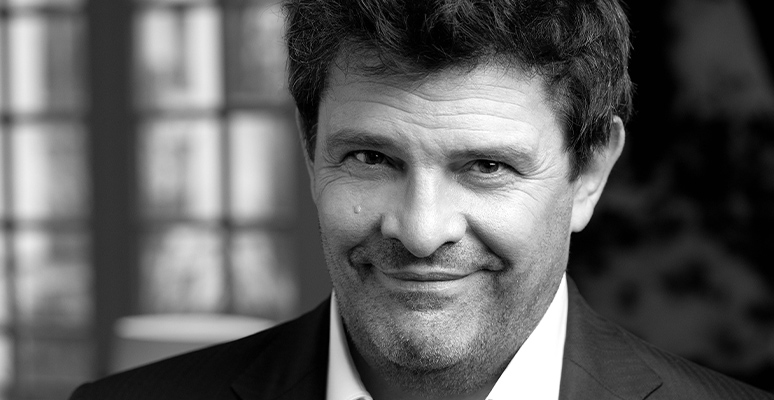“The Italian code” is a blog on Made in Italy and symbol-intensive industries, coordinated by Gabriella Lojacono. The interview with Jean-François Palus concludes the two-part series on the wave of changes in CEOs and Creative Directors currently reshaping the luxury industry.
Luxury is entering a new era, less driven by hype and more by consistency. Brands must balance heritage and relevance, aspiration and discipline. The reshuffling of leadership and creative direction we reported on last week (and summarized in the table at the end of this article) is only the beginning.
Luxury is entering a new era, less about hype, more about coherence. Brands must balance heritage with relevance, dream with discipline.
It is certainly a time to challenge old assumptions; yet the paradox lies in how to drive transformation without creating chaos; how to return to customer advocacy, desirability, and value creation (then perceived and captured) while maintaining the minimum stability needed to offer strong points of reference. The reshuffling of leadership and creative direction we reported on last week (and summarized in the table at the end of this article) is only the beginning.
These are the themes we explored in conversation with Jean-François Palus, Executive Fellow at SDA Bocconi and longtime luxury executive, who shared his perspective and responded to some of the key questions shaping the future of luxury leadership.

Jean-François Palus, Executive Fellow di SDA Bocconi
As Jean-François notes: "Luxury has always been about reinvention, but now, that reinvention needs a different kind of leader."
GL: What do these leadership shifts reveal about the luxury industry’s current priorities?
JFP: In my view, these leadership changes reveal that in the current environment, this industry can no longer do more or better the same thing but must do something different, must reinvent itself.
GL: What do these shifts mean for future hiring and executive development? What are the new traits of effective leadership in luxury today?
JFP: The luxury industry ought to be more diverse in terms of talents, notably with importing new expertise and techniques coming from other industries. Today, effective leadership in luxury needs to complete traditional luxury attributes with contemporary business acumen and ways-of-doing (strategy, marketing, supply chain, etc.).
GL: What’s the strategic logic behind appointing leaders from outside the luxury industry? Can that be a long-term advantage or a short-term risk?
JFP: It is indeed a short-term risk but definitely a long-term advantage. The objective is for these leaders to bring in different insights, specific perspectives, first-in-class know-how as well as a fresh look at things; this will enable a reboot of the ways of doing in these companies.
GL: Are we witnessing a permanent redefinition of roles, or just a moment of transition?
JFP: I think it is more an acceleration of the maturation of the luxury industry. In fact, this industry is rather young. Fifty years ago, its was quite nascent and was primarily based on artisanship and aesthetics (to make it short). It has become a genuine industry and currently, with this new blood, it is catching up other industries in terms of expertise and techniques. Creativity is still of paramount importance, but it is now powered with more science.
GL: Are companies doing enough to build internal pipelines of creative and executive talent, or is the system still too focused on external “star power”?
JFP: Building effective internal pipelines of creative and executive talent is one of the know-hows that can be improved by learning from other industries. From professional soccer teams for instance. However, like in football, external “star power” will continue to exist, particularly for artistic directors.
GL: What kind of cross-functional or cross-category experience is becoming most valuable in luxury leadership?
JFP: In my opinion, luxury leaders need to have an effective experience in positions outside of their native country to gain an understanding of several business cultures. They should also have gained field experience and capacities in both merchandising and retail.
GL: How has the relationship between Creative Directors and CEOs evolved? Who sets the tone for the brand today?
JFP: The CEO and the Creative Directors form an essential duet at the helm of a luxury company. But the boss definitely has to be the CEO. The CEO crafts the strategic roadmap and decides for the ways to implement it. Within this strategic, business and financial framework, the Artistic Director is in charge of creating the ways to express the brand.
GL: Is luxury ready to move beyond the traditional “star system” when it comes to creative talent?
JFP: It is indeed. I firmly believe that in a luxury company, today even more than before, nobody can be greater than the Brand. The ultimate star ought to be the Brand.
GL: To what extent should creative leaders be more involved in commercial and operational decisions?
JFP: I think that they should periodically be informed of and challenged with trading performances and key merchandising metrics such as sell through. They can also be closely involved, but without a veto power, in the decision-making process regarding communications and store-planning.
GL: What role do regional dynamics play in leadership choices today? Are we seeing a shift in cultural influence (e.g., from Europe to Asia or the US)?
JFP: Regional dynamics play a tremendous role today and they cannot be ignored. Particularly the various Asian behaviours towards luxury in general and luxury consumption in particular. Today, leaders should have a field experience abroad and should cultivate a curiosity about foreign cultures and consumption habits. They should also build central teams with the fine mix between local and foreign people to better deal with these dynamics.
GL: What internal transformations must companies make to support these new leaders and avoid silos?
JFP: In my view, the primary and most difficult transformation deals with people. Luxury companies should inject new talents and nurture current talents so that the level of expertise and technicity can be enhanced. Each team should be carefully crafted in terms of technical, cultural backgrounds and experiences. They should also encourage and facilitate bridges and transfers between central and field positions, between countries, between functions, etc.
GL: What are the risks of moving too fast in leadership turnover? Can too much change hurt brand consistency and employee morale?
JFP: There are risks, undoubtedly. Of failure if the grafting is rejected, of creating a period of uncertainty for clients and employees, of implemented so deep changes that the company will have to reboot, etc. But I do believe that these risks are worth being taken and must be taken.
GL: Do you believe the current pace of change is sustainable or could we see a pendulum swing back toward stability?
JFP: I believe that the current transformation spree replies to the present difficulties faced by the industry as a whole and some actors more specifically. Changes will need time to become effective and to be implemented. When they start to produce positive impacts and when the crisis ends, because it will, there will be a pause in those transformations. Until they become necessary again …
A selection of leadership and creative shifts in luxury (2024–2025)
| Brand | Role | Outgoing | Incoming |
|---|---|---|---|
| Kering | CEO | François-Henri Pinault | Luca de Meo |
| Gucci | Creative Director | Sabato De Sarno | Demna |
| Gucci | CEO | Stefano Cantino | Francesca Bellettini |
| Balenciaga | Creative Director | Demna | Pierpaolo Piccioli |
| Versace | Creative Director | Donatella Versace | Dario Vitale |
| Celine | Creative Director | Hedi Slimane | Michael Rider |
| Valentino | CEO | Jacopo Venturini | Alessandro Bellini |
| Bottega Veneta | Creative Director | Matthieu Blazy | Louise Trotter |
| Valentino | Creative Director | Pierpaolo Piccioli | Alessandro Michele |
| Blumarine | Creative Director | Walter Chiappoini | David Koma |
| Valentino | Creative Director | Pierpaolo Piccioli | Alessandro Michele |
| Missoni | Creative Director | Filippo Grazioli | Alberto Caliri |
| Dries Van Noten | Creative Director | Dries Van Noten | Julian Klausner |
| Alberta Ferretti | Creative Director | Alberta Ferretti | Lorenzo Serafini |
| Tom Ford | Creative Director | Peter Hawkings | Haider Ackermann |
| Chanel | Creative Director | Virginie Viard | Matthieu Blazy |
| Dior | Creative Director | Maria Grazia Chiuri | Jonathan Anderson |
| Lanvin | Creative Director | Bruno Sialelli | Peter Copping |
| Sergio Rossi | Creative Director | Evangelie Smyrniotaki | Alessandro Vigilante |
| Fendi | Creative Director | Kim Jones/Silvia Venturini | Grazia Chiuri |
| Chloé | Creative Director | Gabriela Hearst | Chemena Kamali |
| Fendi | CEO | Serge Brunschwig | Pierre-Emmanuel Angeloglou |
| Burberry | CEO | Jonathan Akeroyd | Joshua Schulman |
| Maison Margiela | Creative Director | John Galliano | Glenn Martens |
| Jil Sander | CEO | Serge Brunschwig | Ubaldo Minelli |
| Loewe | Creative Director | Jonathan Anderson | Jack McCollough & Lazaro Hernandez |
| Saint Laurent | CEO | Francesca Bellettini | Cédric Charbit |
| Givenchy | Creative Director | Matthew M. Williams | Sarah Burton |
| Marni | Creative Director | Francesco Risso | Meryll Rogge |
| DIESEL | CEO | Vacant | Andrea Rigogliosi |
Read the first installment of the series:
Lojacono - Luxury at a crossroads: A new era of leadership and reinvention




